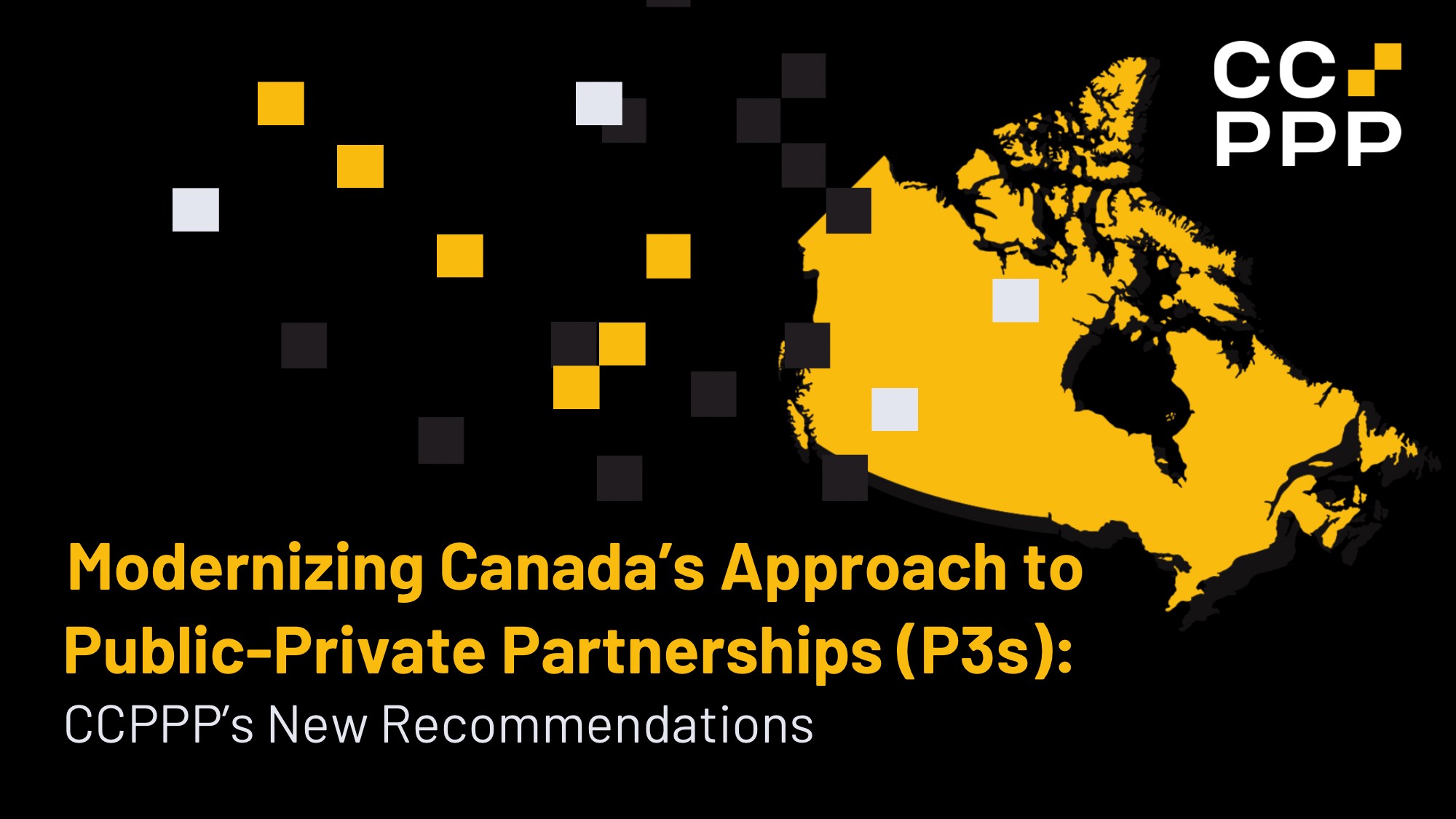
Over the past 30 years, public-private partnerships (P3s) have demonstrated their benefits in delivering high quality infrastructure and services to Canadians with the primary objective of bringing value to taxpayers.
The Council is marking an important milestone in Canada’s infrastructure landscape, with the release of this pivotal document for the P3 industry. Emphasizing collaboration, innovation and practical solutions, our P3 policy primer paves the way for creating resilient, efficient and long lasting infrastructure that meet the evolving needs of Canadian communities.
Based on extensive research and consultation with government and industry, this document sets out a series of considerations and eight key recommendations for government policymakers and private sector decision-makers that provide a clear path forward to work together.
Download Report & Recommendations
These recommendations put Canadian communities back at the forefront of how infrastructure is delivered, operated and maintained in Canada. Delivering dependable, resilient and innovative assets — at the best value — for all of us every day is what matters most.
To do this, we need to get to the core of some lingering and emerging challenges in our country’s infrastructure sector — and share best practices — to get practical and achievable solutions for Canadians enacted now. Quite simply, we need to adapt and evolve.
New asset classes, current market conditions and global precedents are expanding our definition of what a Canadian P3 can be.
The Council believes full lifecycle DBFOM and DBFM models still remain not only viable, but a preferred option for P3s in Canada. However, it is also crucial to explore the appropriate use of other approaches, including revenue-generating concessions and Progressive models, while upholding the key attributes of Canada’s world-renowned P3 model.
Given the Council’s view on the benefits of leveraging private capital in P3s, it will work in close collaboration with members to investigate the potential for the inclusion of private capital in Alliance or IPD models. Look for a workshop on this very issue coming up at P3 2024 this fall.
We look forward to hearing your thoughts and encourage our members to continue to debate, discuss and share new ideas and best practices with each other. It is clear this work — this evolution — is an ongoing processs.
The Council recommends:
A Huge Thank You to our Members
We sincerely thank the dedicated members of the CCPPP Board, Executive Committee and Communications Committee for their support and participation throughout the development of this policy positioning statement. Their extensive knowledge and experience in the P3 and infrastructure industries have been invaluable in shaping the recommendations in this document.
The Council has diligently compiled and analyzed our members' feedback, opinions, and experiences through numerous meetings and surveys. This effort is further enriched by insights from the Council’s P3 2023 conference and workshops and our enhanced engagement with government ofcials and politicians nationwide, significantly contributing to our understanding of current market challenges and opportunities.
We thank our members for their ongoing support and dedication to advancing best practices and knowledge. Their efforts help create an enabling policy environment that will secure and enhance Canada's infrastructure investment landscape.